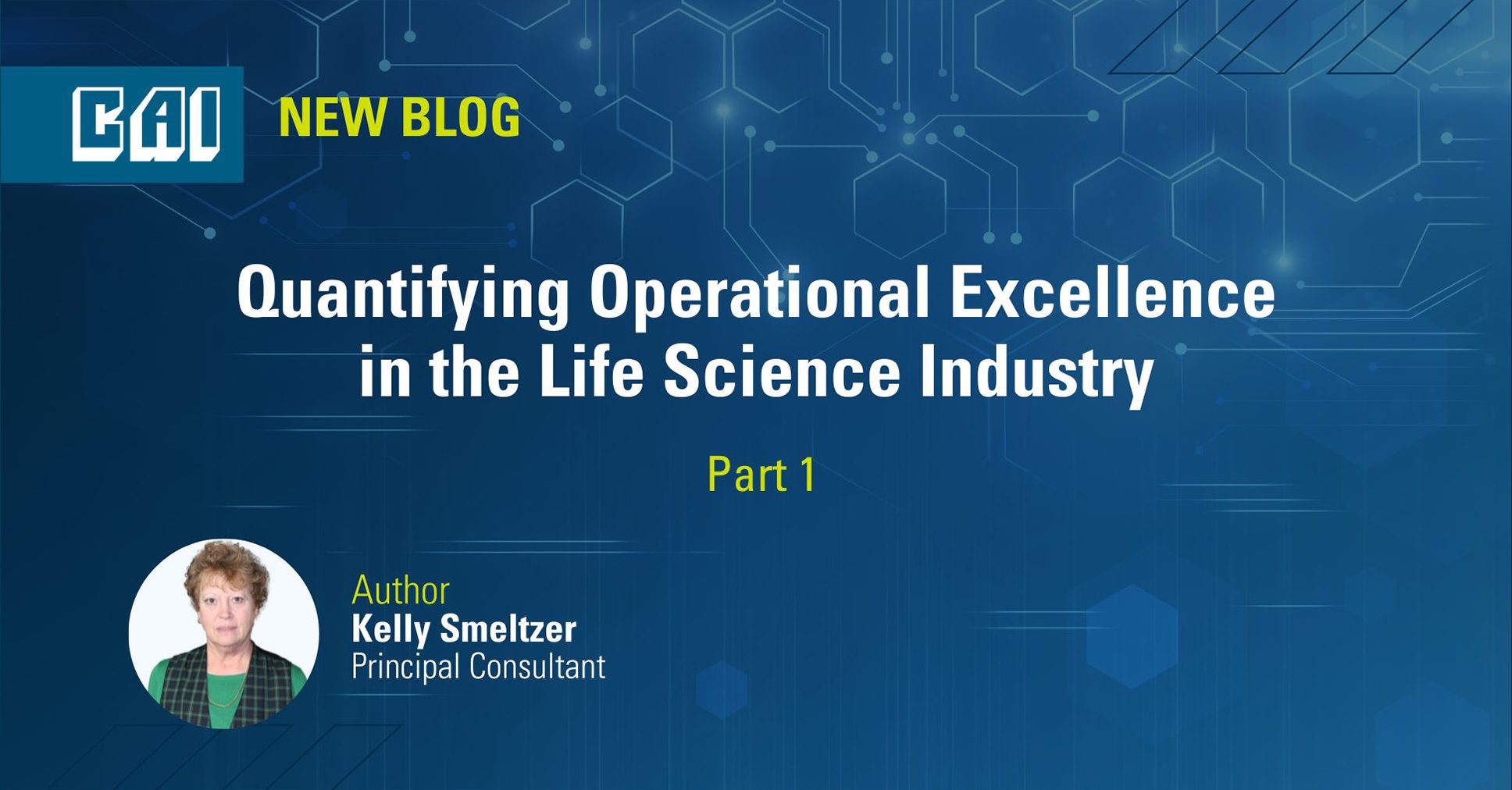
Quantifying Operational Excellence in the Life Science Industry (Part 1 of 2)
Quantifying Operational Excellence in the Life Science Industry
The life science industry, encompassing pharmaceuticals, biotechnology, and medical devices, plays a critical role in advancing healthcare and improving the quality of life for individuals worldwide. In this highly regulated and competitive sector, Operational Excellence (OpEx) is crucial for organizations to thrive. But how can OpEx be quantified in the complex and ever-evolving landscape of life sciences? This blog aims to explore the concept of OpEx within the life science industry and provide insights into quantifying its impact.
Defining Operational Excellence
OpEx in the life science industry refers to the continuous improvement and optimization of processes, systems, and practices to achieve superior performance and outcomes. It encompasses various elements, including quality management, compliance, efficiency, innovation, and customer satisfaction. The ultimate goal is to deliver safe, effective, and high-quality products or services while maximizing productivity and minimizing risks.
Clients that I’ve collaborated with often know that they could be performing at a higher level but need external support in terms of resources, project management, and the use of Six-Sigma / Lean tools. Across the spectrum of life sciences, you see companies with many different approaches to OpEx. Less mature life science companies are primarily focused on bringing a product to market. While some processes may be highly efficient, excellence is not the immediate goal and is often delayed until after manufacturing startup. More mature life science companies, particularly medical device manufacturing, frequently have budgeted OpEx departments tasked with managing OpEx projects, reporting results, and contributing to operational quality and waste reduction objectives.
Key Metrics for Quantifying Operational Excellence
An essential element of any OpEx activity is the ability to define and measure the success of the OpEx project, whether in terms of cost reduction, cycle time reduction, or as an overall reduction in deviations and near-misses. Key OpEx metrics include:
- Compliance Metrics: Compliance with regulatory requirements is of utmost importance in the life science industry. Metrics such as the number of regulatory inspections, audit findings, and corrective actions can provide insights into an organization’s commitment to adhering to applicable regulations and standards.
- Quality Metrics: Quality is a cornerstone of OpEx in life sciences. Metrics like product defects, deviations, and customer complaints help gauge the effectiveness of quality management systems. Additionally, measuring the number of batch rejections and product recalls can indicate the robustness of quality control processes.
- Efficiency Metrics: Operational efficiency directly impacts productivity and cost-effectiveness. Key metrics to consider include cycle time, process yield, equipment utilization, and resource allocation. Monitoring and optimizing these metrics can reveal areas of improvement and enable better resource planning.
- Innovation Metrics: The life science industry thrives on innovation, with organizations striving to develop novel therapies, technologies, and treatments. Metrics such as the number of patents filed, successful product launches, and research and development investment ratios reflect an organization’s focus on innovation and its ability to translate ideas into commercial success.
- Customer Satisfaction Metrics: The satisfaction of healthcare professionals, patients, and end-users is vital in the life science industry. Metrics like customer feedback, net promoter scores, and customer complaint resolution rates offer insights into an organization’s commitment to meeting customer needs and maintaining strong relationships.
- Risk Management Metrics: Given the potential impact on human health, risk management is paramount in the life science industry. Metrics such as the number of adverse events, near-misses, and risk mitigation effectiveness can help assess an organization’s proactive approach to identifying, analyzing, and managing risks.
- Employee Engagement Metrics: Engaged employees contribute significantly to OpEx. Metrics like employee satisfaction, training hours per employee, and retention rates can provide insights into the organizational culture, talent development, and employee well-being.
A Closer Look at Efficiency Metrics
Efficiency metrics are critical for measuring and achieving OpEx. With increasing competition, evolving regulatory requirements, ever-changing reimbursement schemes, and the constant drive for innovation, organizations must continually improve their operational efficiency to remain competitive and meet the needs of patients and healthcare professionals.
Adopting lean and Six Sigma methodologies can significantly contribute to OpEX in the life science industry. Lean principles focus on eliminating waste and streamlining processes, while Six Sigma aims to minimize process variability and defects. Metrics such as the number of process steps, value-added versus non-value-added activities, and defect rates can be tracked to measure the progress of lean and Six Sigma initiatives. These metrics provide a clear understanding of process efficiency improvements and the impact on OpEx.
Conclusion
Quantifying OpEx in the life science industry is essential for organizations to achieve sustainable success and deliver innovative and safe products or services. By considering key metrics across compliance, quality, efficiency, innovation, customer satisfaction, risk management, and employee engagement, organizations can gain valuable insights into their performance and identify areas for improvement. Leveraging data and technology can further enhance measurement capabilities and pave the way for continued advancement in the pursuit of OpEx in the life science industry.
Check back soon for Part 2 of this blog for further conversation on what Excellence really looks like – including real-life examples or follow the CAI LinkedIn feed to be notified when it posts.



